NNCI Image Contest 2021 - Unique
Most Unique Capability
This category celebrates the unique capabilities each site of the NNCI has on offer. Please check out the images below and read a little about the research behind them.
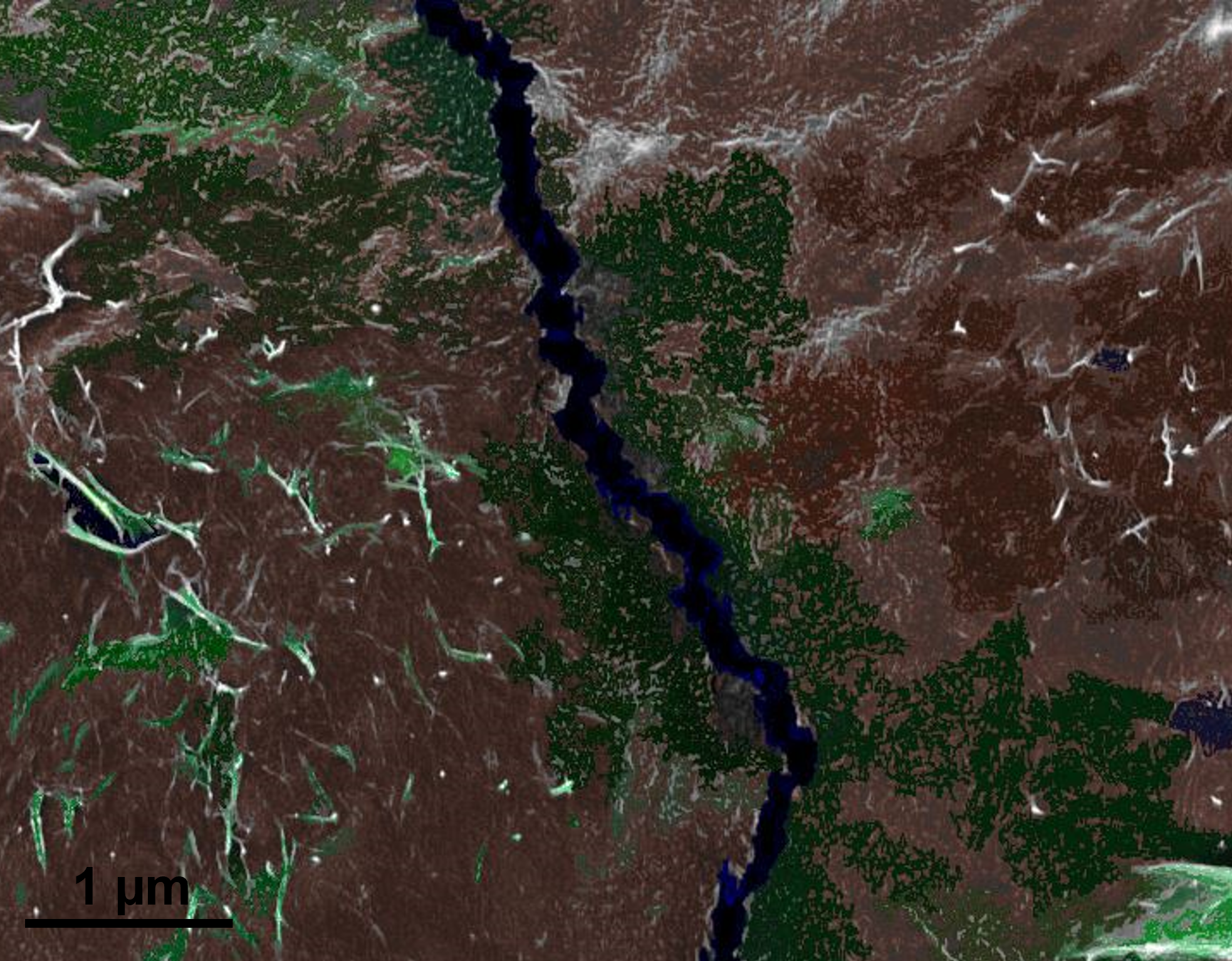
River and Mountains
Artists: Zacary Croft and Oscar Valenzuela, Graduate Students, Virginia Tech
NNCI Site: NanoEarth
Tool: LEO (Zeiss) 1550 Field Emission Scanning Electron Microscope
“River and Mountains” features a scanning electron microscopy (SEM) image of the surface of a polymer-graphene thin-film, with the polymer facing upward. The polymer featured here is the well-known, high-strength polymer, Kevlar®, which tends to form fibrous structures, and a single-layer of graphene has been added to selectively tune the structure of Kevlar® at the surface of the film, creating a diverse and scenic material “landscape.” The overhead angle of the image provides a bird’s-eye view of this landscape, and color has been added to highlight prominent features of the material and their resemblance to nature, without any additional alterations.
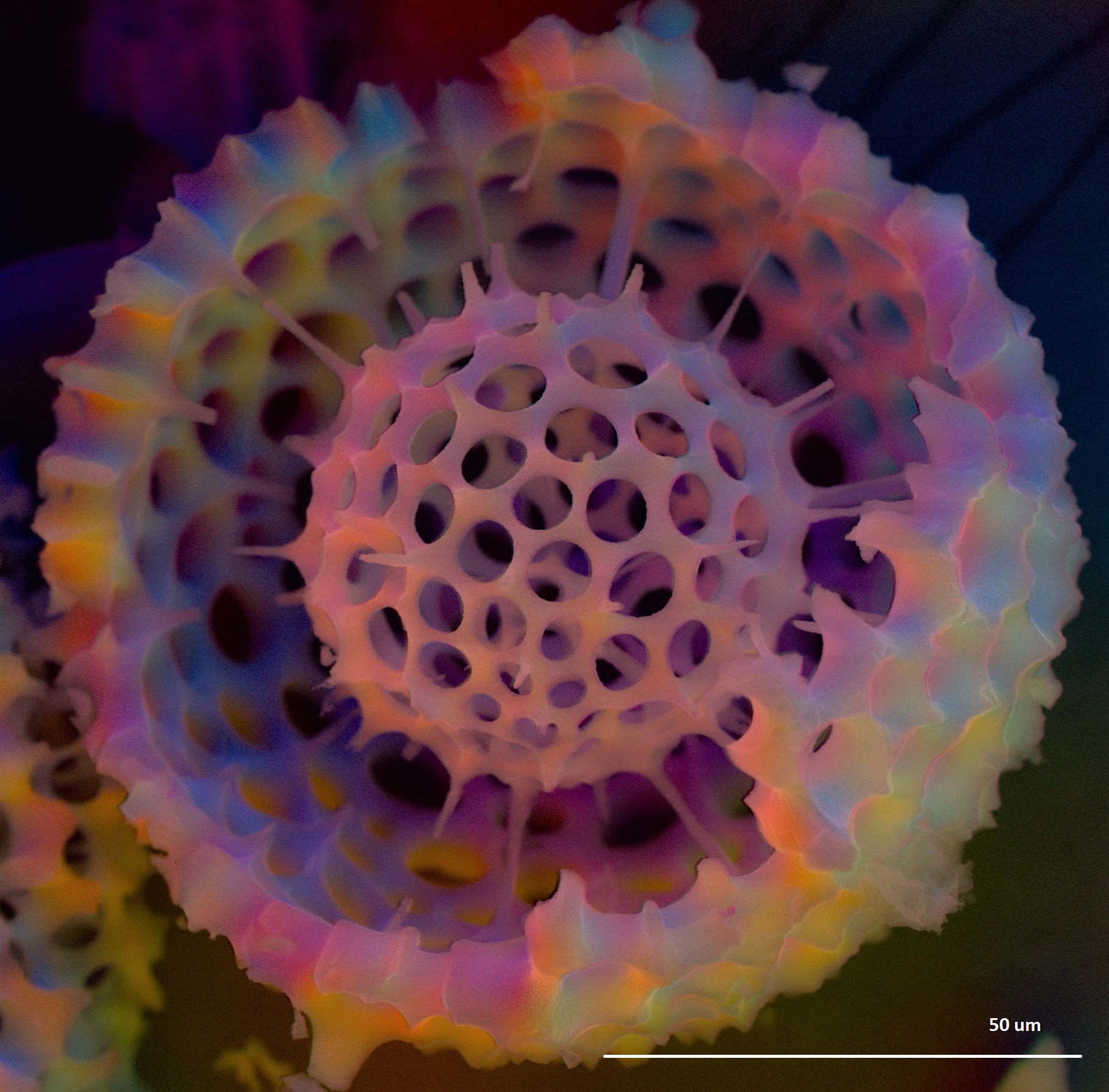
Pearl in a Shell
Artist: Elizabeth King, SEM Assistant Lab Manager, NUANCE Center, Northwestern University
NNCI Site: SHyNE
Tool: Hitachi 3400
The image was taken with the Hitachi 3400’s multi segment backscatter electron detector. Each of the segments can be put into a positive, negative, or neutral state allowing the topography of the sample to be seen from multiple angles. This image was created by superimposing 5 images of the same sample, each taken from a different angle.

Butterfly
Artists: A.A. Kovalev and Bo Li, University of Nebraska-Lincoln
NNCI Site: NNF
Tool: mumax3 micromagnetic simulator and Wolfram Mathematica
The image represents Hofstadter’s butterfly describing magnons -- excitations in a small sample made of an antiferromagnet. The horizontal axis corresponds to the strength of spin-orbit interaction gradient while the vertical axis corresponds to energy. Due to the presence of magnetic field the picture reveals fractal, self-similar pattern. Surprisingly, rather than revealing the typical Hofstadter’s butterfly corresponding to electrons, antiferromagnetic magnons reveal Hofstadter’s butterfly corresponding to Klein-Gordon equation typically used in high-energy physics.
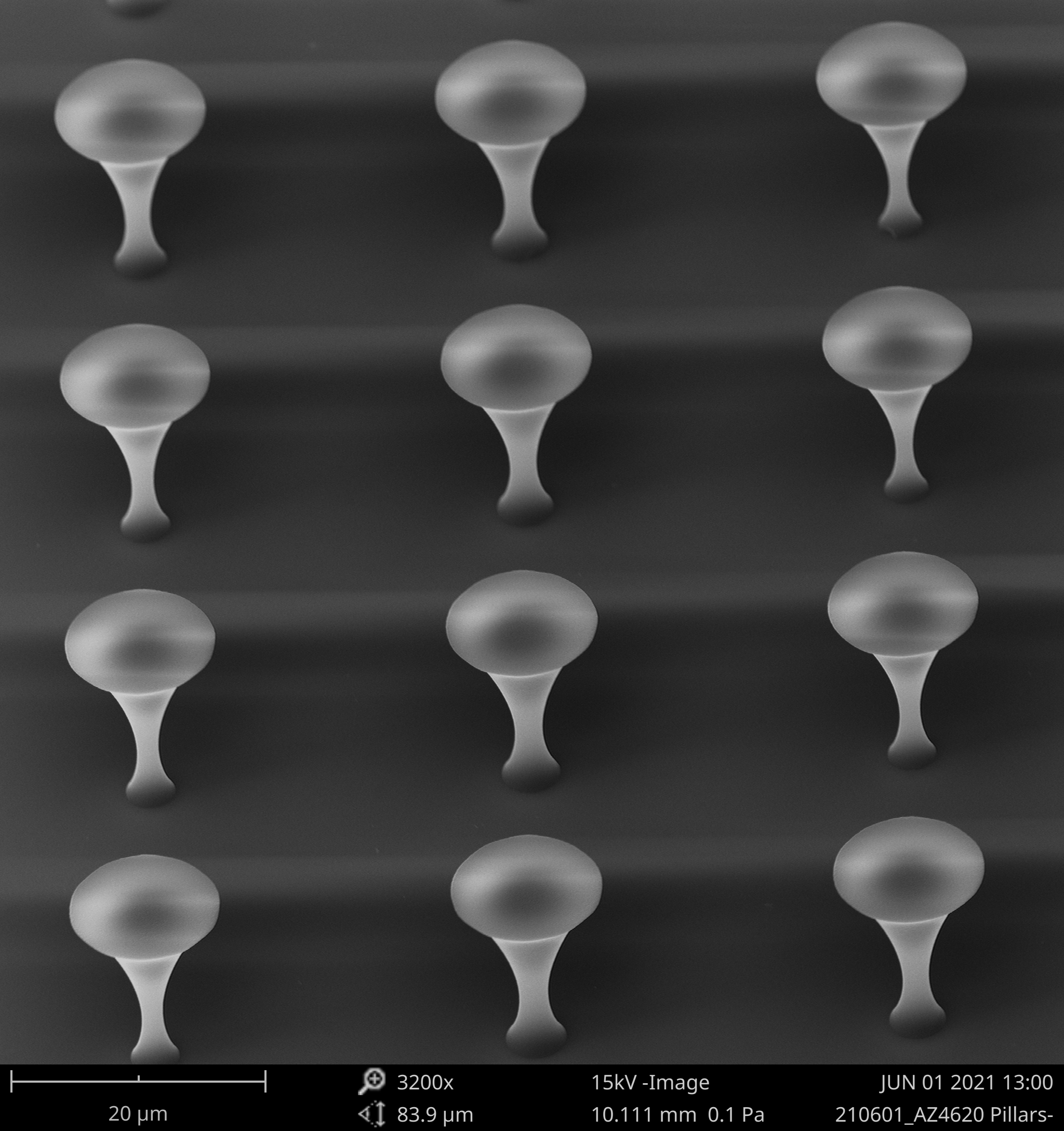
Our Cups Floweth Over, But Can Easily Tip
Artists: Greg Allion, staff, and Sravanthi Vallabhuneni, student, North Carolina State University
NNCI Site: RTNN
Tool: SVG coat track, MA-6 aligner, YES IR oven
Thick photo resist sculpted by utilizing light diffraction and image reversal. The visual beauty speaks for itself. Structures like these can be used to make super hydrophobic surfaces.
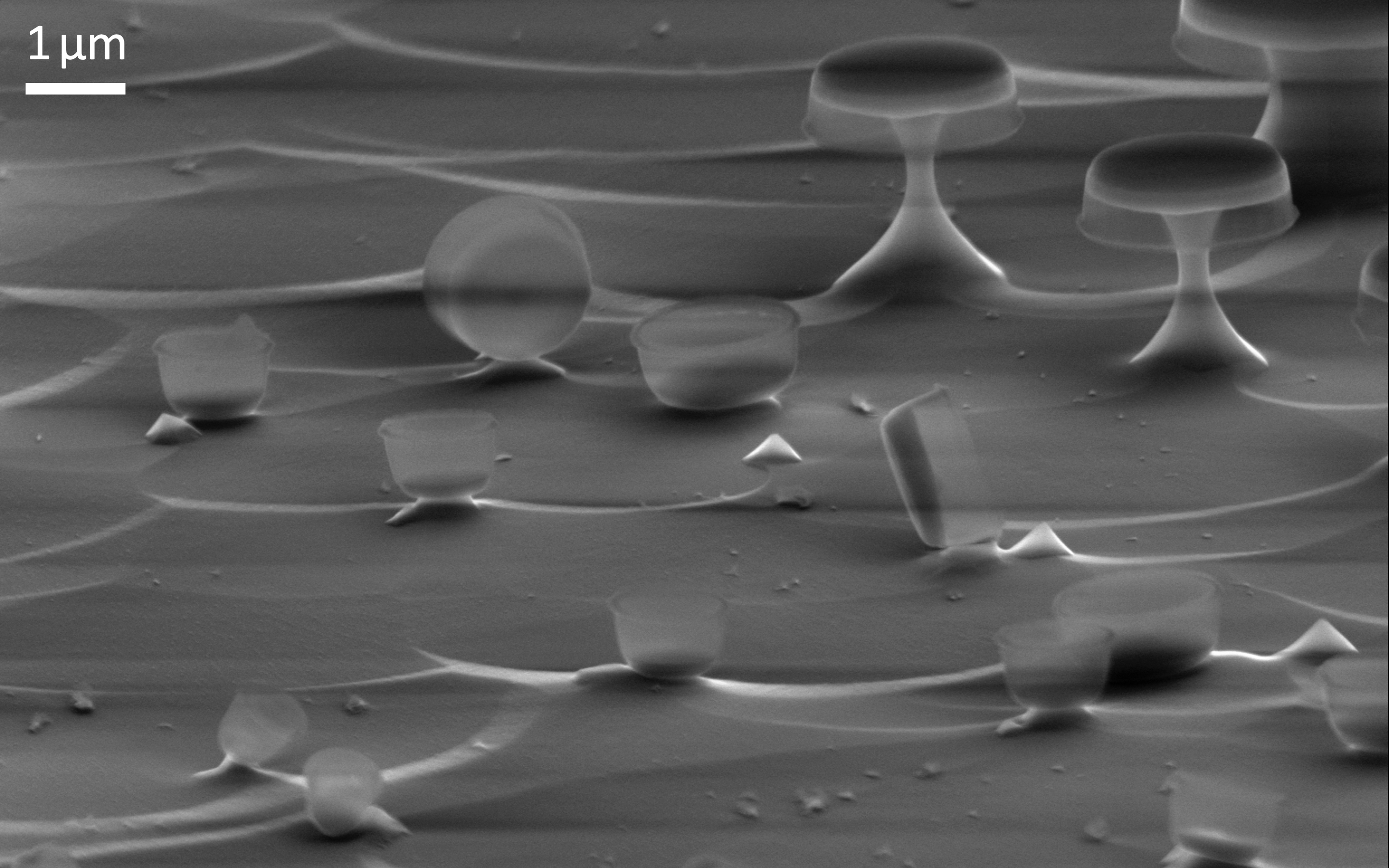
Aluminum Oxide Nanobowls
Artist: Daniel Riedel, Postdoctoral Fellow, Electrical Engineering- Nanoscale and Quantum Photonics Lab, Jelena Vuckovic Group, Stanford University
NNCI Site: nano@stanford
Tool: SEM: Thermo Fisher Scientific Apreo S LoVac Scanning Electron Microscope
The nanobowls are created during the fabrication of diamond nanophotonic devices using an isotropic oxygen plasma undercutting technique. Diamond microdisks are fabricated via electron beam lithography using silicon nitride (200nm) as an etch mask. The sidewalls of the microdisks are capped with a thin layer of aluminum oxide (30nm) via the atomic layer deposition technique. The isotropic oxygen undercuts the diamond structures; small disks topple. The thin aluminum oxide layer is translucent for electrons allowing to control the thickness of the final structure. Photonic devices created using this process serve as an efficient photonic interface for color centers in diamond.
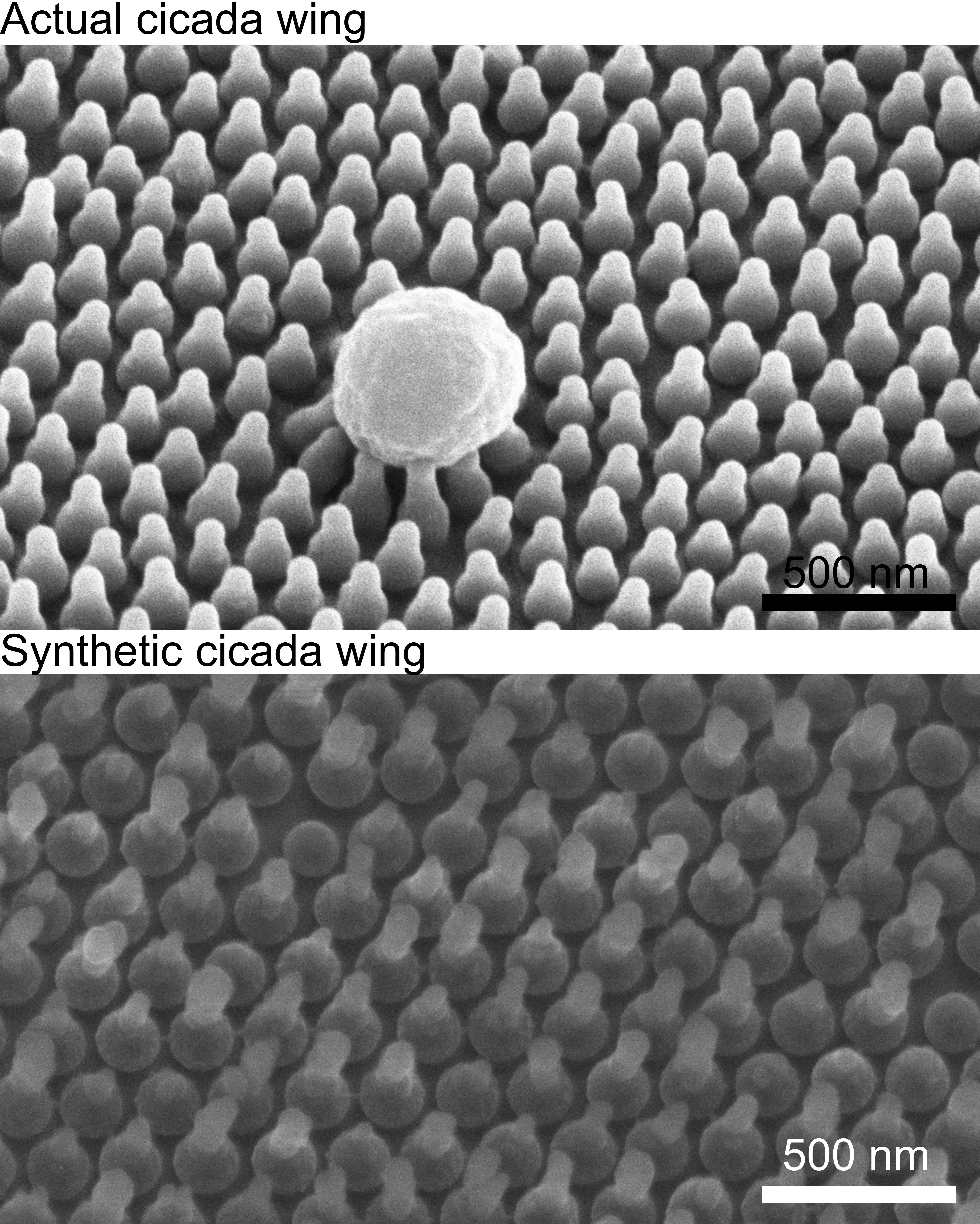
Artificial Cicada Wing
Artist: Dr. Chuang Qu
NNCI Site: KY Multiscale
Tool: KJL Ebeam Evaporator
Real nanostructures on the wing of a Neotibicen canicularis (an annual cicada, also known as the dog-day cicada) (top) VS Artificial nanostructures of a cicada wings (bottom). The artificial cicada wing nanostructures are created by Glancing Angle Deposition (GLAD), a nanofabrication technique which has the unique ability to create a variety of self-assembled three-dimensional nanostructures by adjusting the angle of deposition and the rotation of the substrates. The replica owns the properties of the cicada wings, including super-hydrophobicity and antifouling.
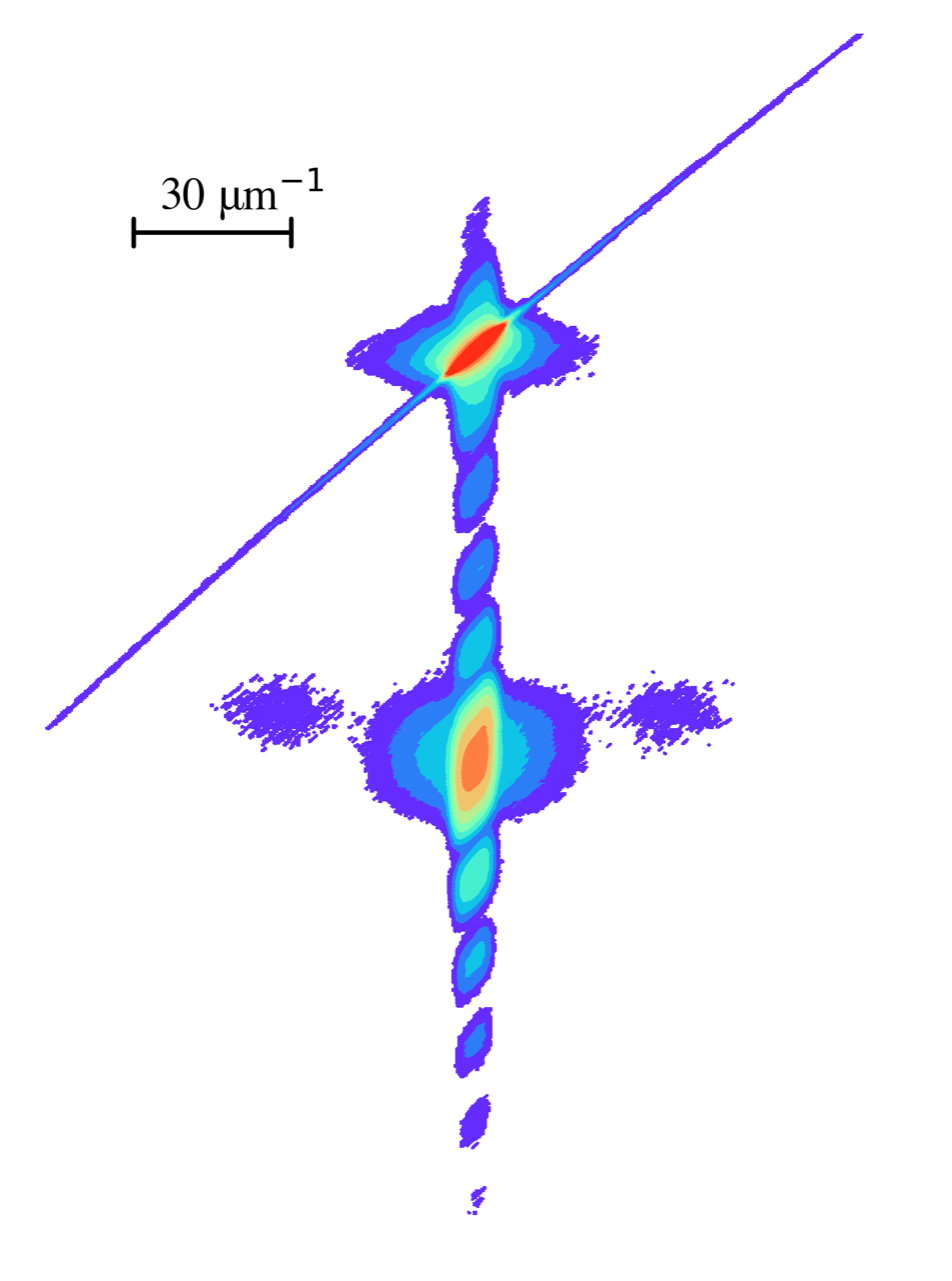
On the Fringe of a Phase Transition
Artist: Tristan K Truttmann, Graduate Student, Chemical Engineering & Materials
NNCI Site: MiNIC
Tool: Rigaku Smartlab XE
This high-resolution x-ray diffraction reciprocal space map provides a direct measurement of the distance between atoms to an accuracy of better than 1 pm. The sample is SrSnO3 grown epitaxially on a GdScO3 single crystal. The film is grown to roughly 40 atoms thick with sufficient smoothness to produce the clear fringes that run down the middle of the image. The film is also beginning to undergo a phase transition that produced the two purple spots on the left and right of these fringes. With a slightly higher thickness, the disorder from the phase transition would destroy these fringes.
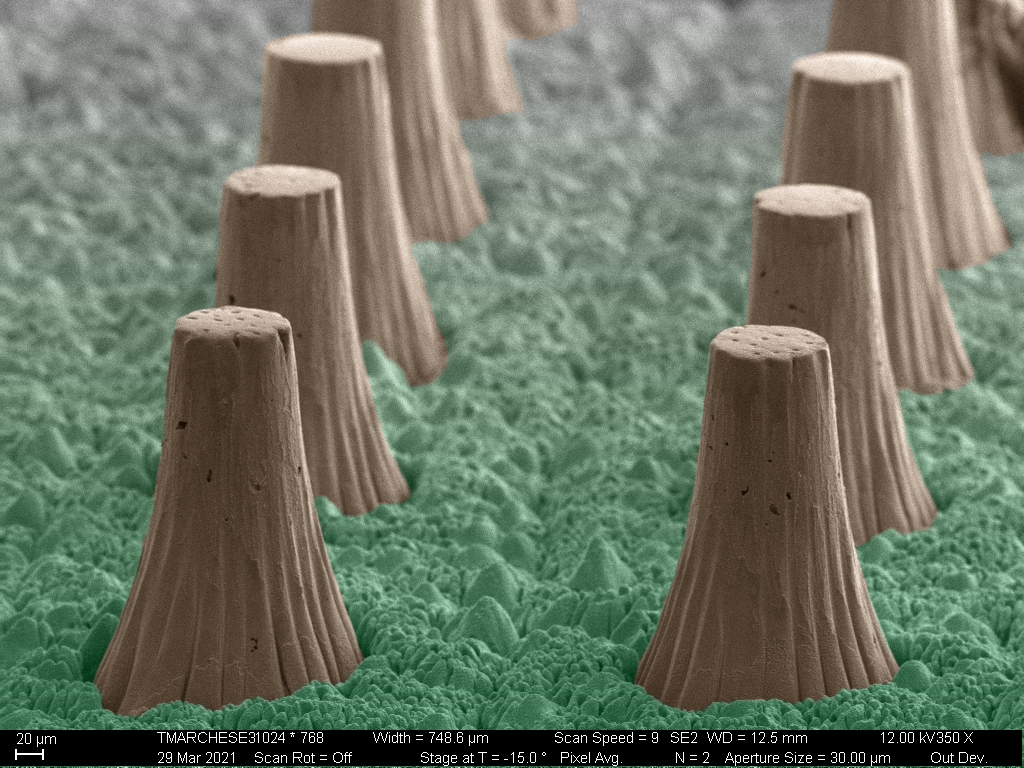
Femtosecond Laser Patterned Stainless Steel 3D Pillar Array Surrounded by Laser Induced Periodic Surface Structures (LIPSS)
Artist: Thomas S. Marchese, Undergraduate Researcher in Dr. Matthew McDowell’s group, Georgia Institute of Technology
NNCI Site: SENIC
Tool: Zeiss Ultra60 FE SEM and Optec Femtosecond laser
The Optec femtosecond laser at Georgia Tech’s Institute for Electronics and Nanotechnology was used to etch away a precise three dimensional pattern into stainless steel over consecutive passes. The micro-machining resulted in an array of nearly identical pillars for use in multiple applications thus far including mechanical indentation testing and also impression of regular surface features into battery components as a method to counteract failure mechanisms that result from volumetric expansion. The pillars slightly tapered sides build a resemblance to the structure of the Devils Tower National Monument in Wyoming.

